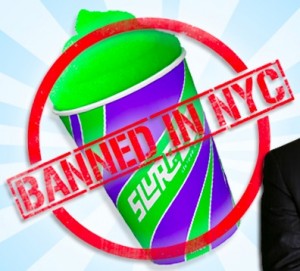 I’m really happy Mayor Bloomberg is pushing to ban on huge sugary drinks in New York City. Publicity about this alone will increase consciousness about just HOW bad these drinks are. They’re killing people! Stress on the body’s insulin producing system and being overweight are important factors contributing to the onset of Type 2 diabetes and sugary drinks are big contributors to obesity and exaggerated sugar consumption.
I’m really happy Mayor Bloomberg is pushing to ban on huge sugary drinks in New York City. Publicity about this alone will increase consciousness about just HOW bad these drinks are. They’re killing people! Stress on the body’s insulin producing system and being overweight are important factors contributing to the onset of Type 2 diabetes and sugary drinks are big contributors to obesity and exaggerated sugar consumption.
Although designer healthy food is annoyingly expensive and the elitist marketing scheme around it totally disgusts me, don’t let the marketers fool you: deals for good food can be found, or made, with a little effort. Growing some of your own fruits and veggies is one way to go. My family has a community garden plot that gives us fresh veggies all summer long, and we are learning to can and pickle extra produce to see us through colder months. A friend of ours grows edible plants in the windows of his home. A truly healthy diet is a low-cost diet too, since the ingredients for slow-cooked meals costs relatively little compared to processed foods, which anyway are unhealthy from the get-go. We think that we’re in such a big rush to get (where exactly?) that we have no time to cook and good food. Let’s not be rushing off to an early grave. We can dial down the speed of our lives, eat well in the company of friends, family and work colleagues: and change our habits, lives, health and futures, forever.
As one Facebook friend pointed out today, there are plenty of yummy foods out there. Making healthy choices means getting used to different tastes, not less delicious ones.
Diabetes today is an epidemic in poor urban neighborhoods
Harvard professor Frank Hu writes for the American Diabetes Association
… studies and randomized clinical trials show that type 2 diabetes is largely preventable through diet and lifestyle modifications. Translating these findings into practice, however, requires fundamental changes in public policies, the food and built environments, and health systems. To curb the escalating diabetes epidemic, primary prevention through promotion of a healthy diet and lifestyle should be a global public policy priority.
CBS news reports, “Since 1980, obesity in children has almost tripled to more than 12 million … Only 17 percent of students get the recommended one hour of moderately vigorous physical activity a day.” And the Daily News tells us, a “study published … in the (medical journal) Pediatrics, found that the percentage of adolescents age 12 to 19 with Type 2 diabetes or pre-diabetes nearly tripled from 9% in 1999 to 23% in 2008.”
And it’s an intentionally created epidemic
Are there unscrupulous businessmen out there planning to make sure children get less exercise and worse food in school, who are looking at the best ways to addict our kids to fat-making fast food and insulin blowing/tooth rotting sugary drinks so they will become diabetics at an early age? You can bet your bottom dollar those people are out there en force; and also that they’re extremely good at their jobs. The goal? To make very rich the pharmaceutical and medical equipment companies selling the medicines and paraphernalia diabetics need: monitoring supplies, leg stockings, wheelchairs, prosthetic limbs, special shoes and hospital beds. The market is vast, and we haven’t yet considered the revenue this disease produces for the medical professionals and institutions who treat it.
In These Times author Susan J. Douglas writes
Type 2 diabetes is caused by excess weight, lack of exercise and poor diet, and is directly related to poverty … Diabetes is the leading cause of blindness and kidney failure in the country; it often leads to amputation. It’s the sixth leading cause of death in the United States and costs us $132 billion a year. And it’s preventable, save for the enormous financial interests involved in its preservation. “Bad Blood” brought together three American scandals–poverty, our morally bankrupt for-profit health care system and the practices of our nation’s fast food joints.
Combined, they make up an illness-industrial complex, in which big players in the food industry, insurance industry and medical establishment profit wildly. But they need more raw materials to keep them going, more fodder for their assembly lines. Poor people of color are that fodder, and very few of the rest of America seems to care.

